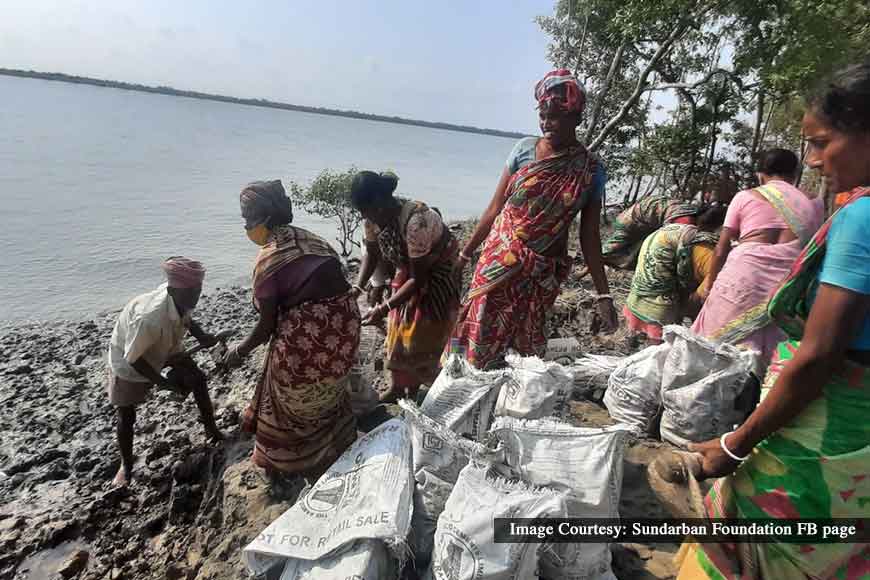Introduction
The Sundarbans, located at the mouth of the Ganges Delta in India and Bangladesh, is a remarkable ecosystem that stands as a unique testament to the beauty and complexity of nature. Covering approximately 10,000 square kilometers, the Sundarbans is the world’s largest mangrove forest and a UNESCO World Heritage Site. Lets discuss about the biggest challenge of Sundarban India.

This biodiverse region teems with a myriad of flora and fauna, some of which are rare and endangered. However, amidst this natural splendor lies a formidable challenge that threatens the ecological balance and the very existence of this invaluable ecosystem. In this blog, we will delve into the biggest challenge of Sundarbans India and explore potential solutions to preserve its magnificence for future generations.
The Biggest Challenge: Climate Change and Rising Sea Levels
While the Sundarbans has faced several challenges over the years, including poaching, habitat destruction, and human-wildlife conflicts, the most significant and pressing threat comes from the adverse impacts of climate change and rising sea levels. Lets find about the biggest challenge of Sundarban India.

The consequences of climate change, such as global warming and melting polar ice, have manifested in the Sundarbans region, causing a rise in sea levels at an alarming rate. As a low-lying coastal area, the Sundarbans is exceptionally vulnerable to this phenomenon.
Erosion and Land Loss:
The rising sea levels have led to increased erosion along the coastlines of the Sundarbans. The encroaching waters have started to consume large tracts of land, including mangrove forests and freshwater habitats. Consequently, this has resulted in the loss of critical ecosystems and essential breeding grounds for many species of flora and fauna. Lets know about the biggest challenge of Sundarban India.
Salinity Intrusion:
The Sundarbans is home to unique mangrove vegetation that thrives in a delicate balance of salt and freshwater. However, the rising sea levels cause seawater to infiltrate further into the inland areas, leading to increased salinity in the soil and water bodies.
This has a detrimental effect on the mangroves, as they are sensitive to changes in salinity, and their inability to cope with these alterations can threaten their survival.

Impact on Biodiversity:
The Sundarbans is renowned for its diverse array of wildlife, including the iconic Bengal tiger, numerous bird species, and various marine life forms. However, climate change and rising sea levels are causing disruptions in their habitats, leading to displacement and endangerment of several species.
Read More:
For instance, the Bengal tiger’s habitat is shrinking, pushing these majestic creatures closer to human settlements, resulting in more frequent and severe human-wildlife conflicts.
Threat to Local Communities:
The Sundarbans is also home to a significant human population that relies on its resources for sustenance and livelihoods. With the degradation of natural resources due to climate change, local communities face challenges in fishing, agriculture, and honey collection, leading to increased poverty and economic vulnerability. Lets check about the biggest challenge of Sundarban India.

Mitigation and Conservation Efforts
Despite the daunting nature of the challenge, concerted efforts are being made by various stakeholders to address the threats faced by the Sundarbans. Here are some crucial steps being taken to mitigate the impact of climate change and preserve this unique ecological treasure:
Mangrove Restoration:
Reforestation and restoration of mangrove forests are essential for strengthening the resilience of the Sundarbans ecosystem. Initiatives are underway to plant mangrove saplings and promote community-based conservation efforts. Lets dig about the biggest challenge of Sundarban India.

Climate Change Adaptation:
Implementing climate-resilient practices in agriculture, fisheries, and other livelihood sectors can help local communities cope with the changing environment. This includes promoting sustainable farming techniques and aquaculture methods.
Wildlife Conservation:
Efforts to protect and conserve endangered species such as the Bengal tiger involve strict monitoring and anti-poaching measures. Establishing more protected areas and wildlife corridors can aid in safeguarding their habitats.

Community Involvement:
Engaging local communities in conservation initiatives and providing them with alternative livelihood opportunities can reduce their dependence on the fragile ecosystem, fostering a sense of stewardship for the Sundarbans.
International Collaboration:
As climate change knows no borders, international cooperation between India and Bangladesh is vital to address the shared challenges facing the Sundarbans. Collaborative research, data sharing, and joint conservation efforts can yield more impactful results.
Conclusion
The Sundarbans, India’s ecological treasure, faces an existential challenge in the form of climate change and rising sea levels. The threats of erosion, salinity intrusion, and habitat loss loom large, endangering the unique flora, fauna, and human communities that call this region home.

Nevertheless, by recognizing the urgency of the situation and implementing sustainable and collaborative conservation measures, there is hope that we can navigate through this challenge and protect the Sundarbans for generations to come. Preserving this natural wonder is not just an obligation to the region but a responsibility for the global community as we strive to safeguard our planet’s most precious ecosystems.
Book sundarban Tour with Us
“Discover the Enchanting Sundarbans with Royal Sundarban Tourism! Join us for an unforgettable journey into the heart of this natural wonder, where you’ll witness the elusive Bengal tiger, explore captivating mangrove channels, and spot a plethora of exotic bird species. Our expert guides and top-notch amenities ensure a safe and comfortable expedition as you unravel the hidden treasures of the Sundarbans. Embrace responsible eco-tourism and create cherished memories with Royal Sundarban Tourism.”
Basic Information:
Name: Dilip MAity
Organization: Royal Sundarban Tourism Powered By Argusdna
Organisations Web link: https://royalsundarbantourism.com/
Contact: +917439965413 / 8584838109
Gpay / Phone pay : 9804049535
Email: info@royalsundarbantourism.com
Address: Tiger More, Gosaba, Pakhiralay, Pakhiralay Main road, District- 24 Parganas South, West Bengal 743370
